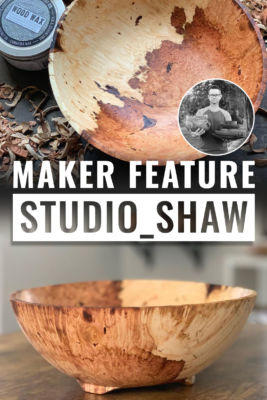 While modern power tools have their place in woodworking, sometimes woodworkers of diverse skill levels like to get back to the basics and work more with their hands. One of the many avenues taken by such professionals and hobbyists alike is woodturning — a woodworking technique that utilizes a wood lathe to turn the wood so artisans can cut shapes in the surface with hand tools. Woodturning skills help you create everything from basic kitchen items like rolling pins and bowls to spindles, legs and pegs for furniture making, making this art one to master when you want to add quality touches to your DIY wood projects.
While modern power tools have their place in woodworking, sometimes woodworkers of diverse skill levels like to get back to the basics and work more with their hands. One of the many avenues taken by such professionals and hobbyists alike is woodturning — a woodworking technique that utilizes a wood lathe to turn the wood so artisans can cut shapes in the surface with hand tools. Woodturning skills help you create everything from basic kitchen items like rolling pins and bowls to spindles, legs and pegs for furniture making, making this art one to master when you want to add quality touches to your DIY wood projects.
What Is Woodturning?
If you want to learn woodturning, it helps to know exactly what’s involved and the amount of practice necessary to hone your skill levels. This human-powered woodworking technique employs a worker known as a turner creating pieces inside a turnery by using handheld tools. The turner uses a spindle to rotate wooden items on their axis, then utilizes special woodturning tools to cut, shape and mold the wood grain. A wood lathe provides a skilled turner with a simple mechanism to sand, knurl, cut, face, turn, deform and drill into wood, helping them produce a plethora of beautiful, useful objects and crafts in the process, such as chess pieces, musical instruments, stair railings and finials for posts and rods.
The History of Woodturning
While the industrial revolution negated the need for woodturning in everyday life for the most part, the wood lathe and spindle still offer a satisfying hobby and way to create artisan items, even in the digital age. The art of spindle turning itself goes back a long way, with the first recorded instances of this craft occurring on monuments in Ancient Egypt. These illustrations displayed people working together to turn a strap lathe and cut the wood, but other civilizations also had variations of these woodturning techniques with bow lathes operated with bare feet, including the Persians, Chinese and Arabs. The bow lathe is one of the most primitive wood lathes that successfully introduced the woodturning hobby into the world.
Between 500 and 1500 A.D., woodturning innovations came to the forefront, with turned wooden items becoming a staple in European households. These items included everyday cups and bowls, which divers have excavated from shipwrecks. More elaborate items such as finely crafted drinking bowls were also popular among the wealthy. As time went on, more and more woodworking professionals learned the timeless techniques of turning and used what they learned to craft exquisitely detailed tables, chairs and staircases, among other creations.
Tools Used for Turning Wood
While our ancestors used a variety of common chisels for cutting forms, modern advances have led to tool suppliers offering their customers a diverse array of tools for turning wood. Some common handheld tools used for woodturning projects include the following:
- Parting tool: This woodturning tool is used to separate the wood project from the lathe and create straight edges to cordon off small and large sections of the work.
- Bedans: Another type of parting tool, bedans are wider than standard options and help turners craft evenly sized sections for spindles.
- Skew chisel: Skew chisels have wide edges running at an angle with a steep point, and they’re used to cut beading, carve detailing and smooth out flat spindles. Once one of the most difficult wood turning handheld tools to master, skew chisels aren’t for use in faceplate turning.
- Bowl gouge: Used in bowl turning projects, a bowl gouge has a deeply fluted design, thick shaft and long handle to handle the challenges of bigger bowl turning crafts.
- Spindle gouge: Used in spindle turning, spindle gouges help a skilled turner add detailing such as beads and coves to spindles. These woodturning tools have a shallow fluted design that enables easy use on raised portions of cross sections.
- Augers: Augers are drill bits used to create holes either part or all the way through wooden objects. These handheld wood turning tools are useful for cutting lamp cord holes or as the first step when prepping a bowl or vessel for hollowing out.
- Hollowing tool: Hollowing tools comprise a whole subsection of wood turning machine tools due to the different sizes and shapes required. These cutting tools hollow out deep portions of vases and bowls and most often have very long handles to maintain ample leverage.
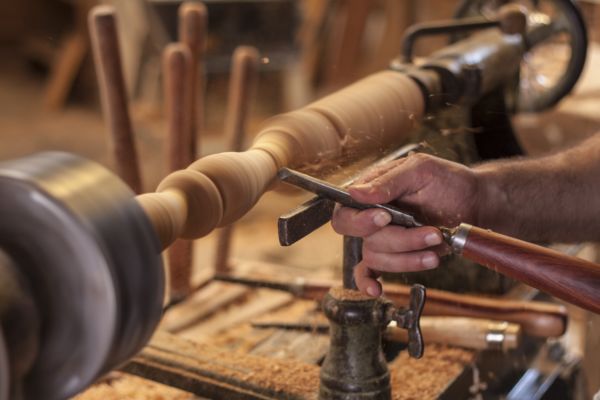
The Woodturning Process and Techniques
The woodturning process utilizes numerous techniques to create a final shape that’s aesthetically pleasing and functional to boot. The following techniques are some of the ones most commonly used for woodturning projects:
Spindle turning
The most basic and common woodturning technique, the spindle turning process requires mounting wood between the head and tailstock of a lathe, then turning the spindle. Decorative options include other tools that rough, size and smooth wood stocks and create an intricate carving or grooves.
Segmented turning
This woodturning process uses several pieces of wood glued together to form a blank before turning. The combination of different wood grain and textures in the hands of a skilled turner creates unique patterns and formations.
Faceplate turning
Faceplate turning requires the turner to affix a circular metal plate onto the end of the lathe, which helps stabilize and hold wood for a smoother woodturning experience. This technique utilizes skills similar to spindle turning while allowing more freedom and creativity.
Bowl turning
Bowl turning uses a gouge bevel to transform a wood blank into its final shape. This technique also utilizes scraping tools to smooth out the hollow surface and create a seamless bowl.
Uses for Turned Wood Projects
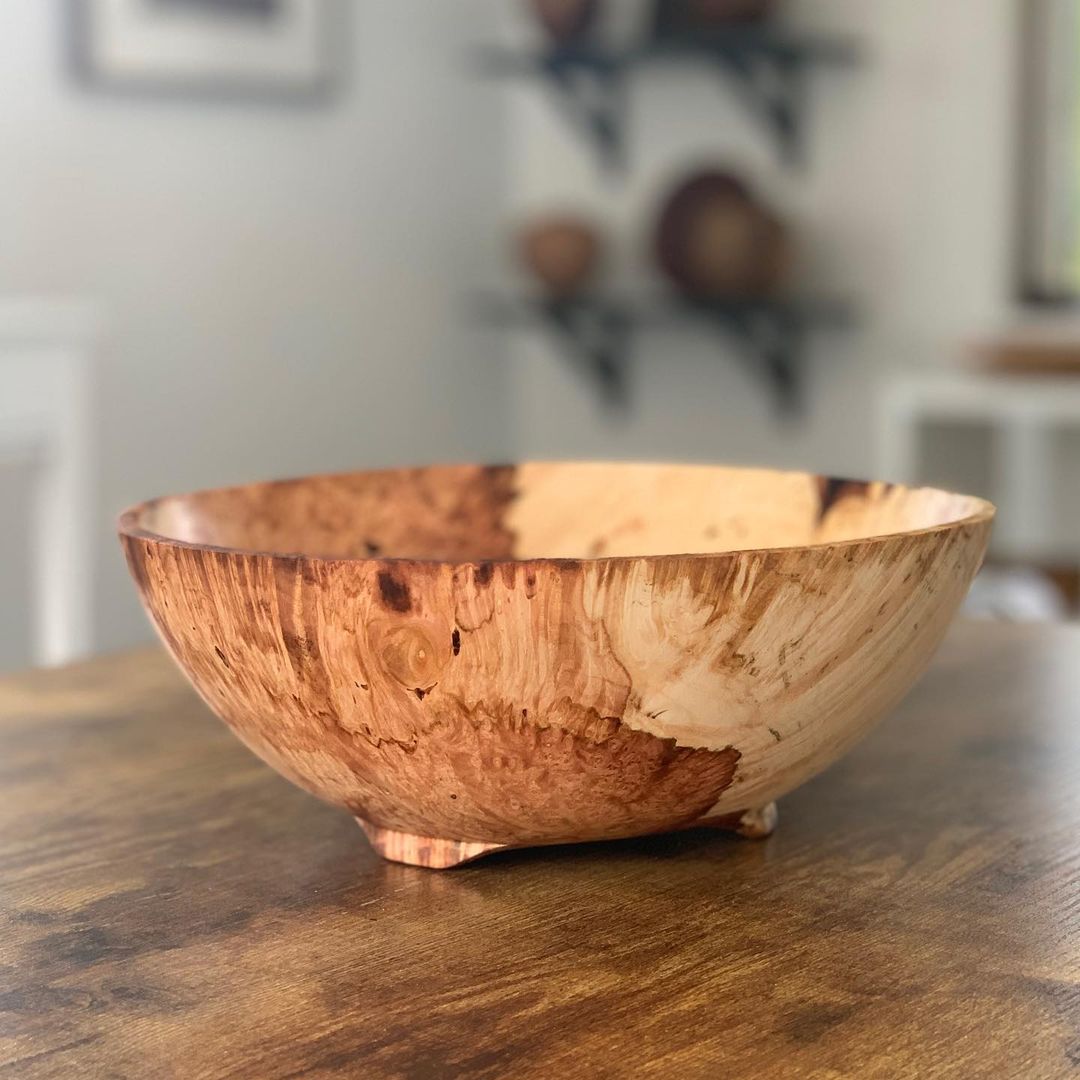
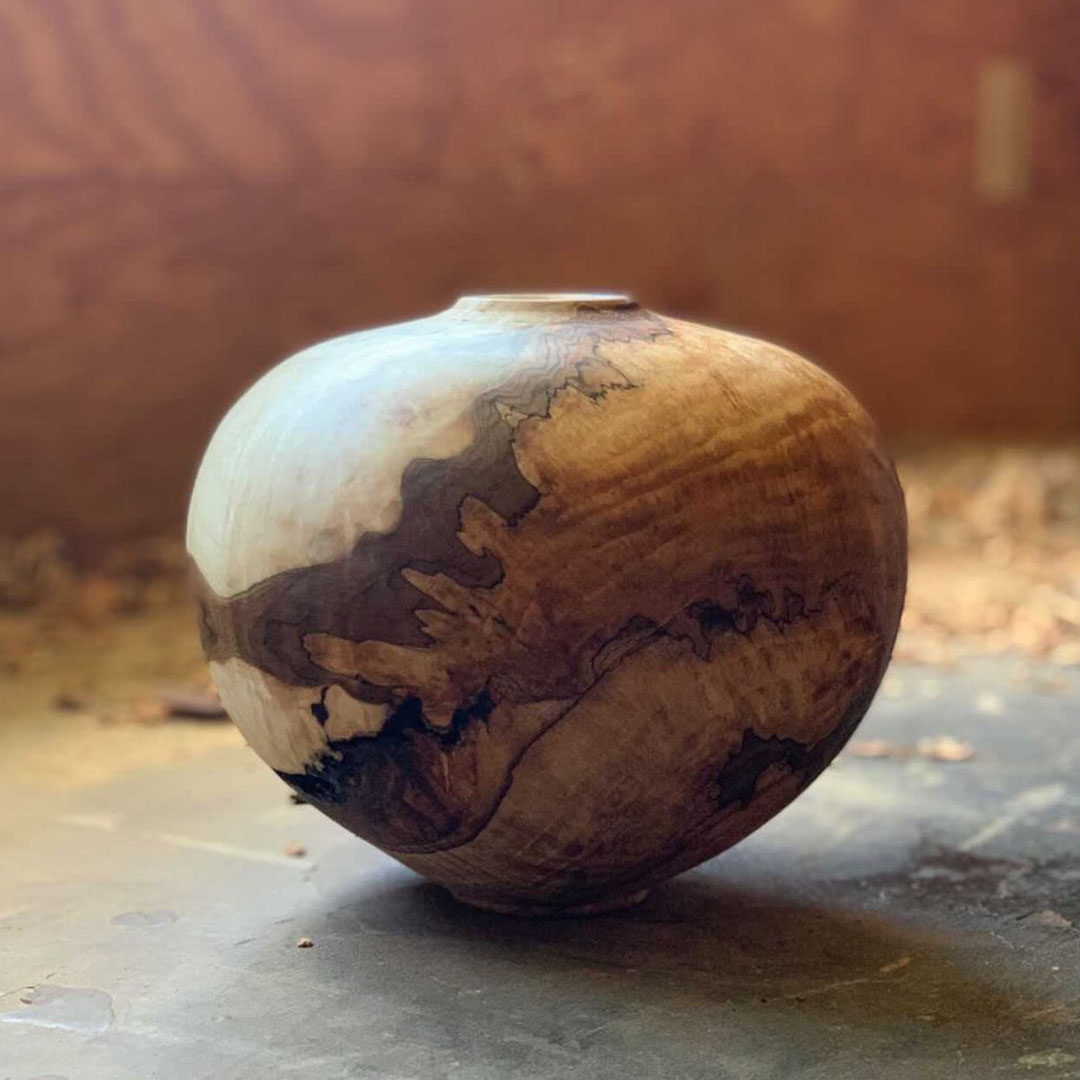
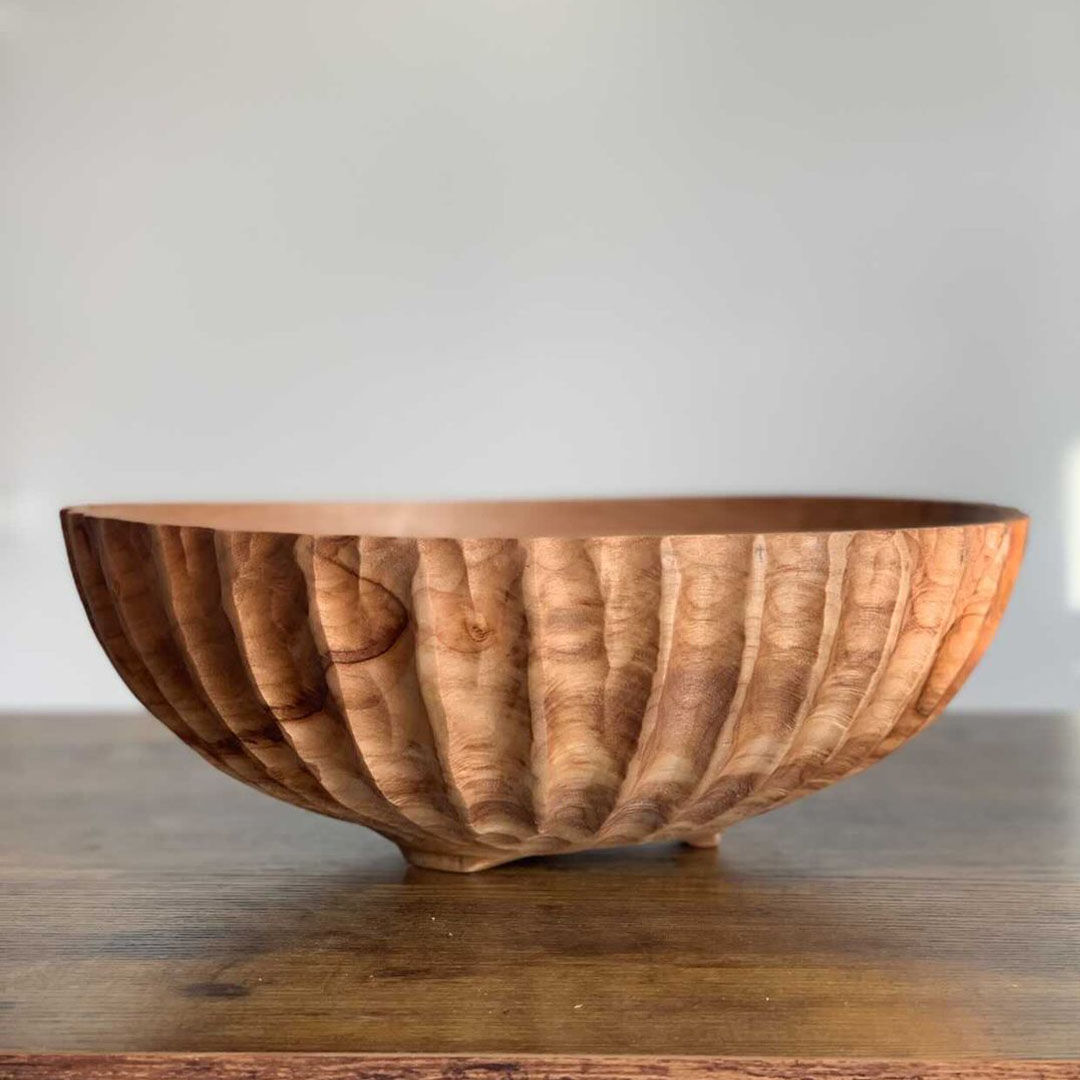
The uses for turned wood projects are many and varied, from creating pieces for personal use in your home to crafting lovely artisan pieces that command a high price in the open market. Some common items a skilled turner might make include:
- Salt and pepper shakers
- Table and chair legs
- Matching plates and goblets
- Gadget and utensil handles
- Spatulas and spoons
- Honey dippers
- Bottle stoppers
- Mortar and pestle sets
- Boxes and lidded containers
- Baseball bats
- Drumsticks and chopsticks
- Lamp bases
Now that you have a basic understanding of the art of woodturning, learn more about the craft by reading our interview with Perry from Shaw Studio. A skilled turner, Perry turned his love for woodworking into a successful business that helps both his customers and his community.
Meet A Maker
To learn more about what custom wood builders can do for you, we’ve interviewed Perry from Shaw Studio to find out what he enjoys most about creating items for customers and the products he uses to make those items look their very best.
What is your business or online name?
If you had to give a 140 character summary of who you are and what you do, what would that be? (Don’t worry, you can cheat a bit on the character count!)
I’m a wood turner. I only work with trees that fell due to storm or age/disease. I mainly make hollowed vessels and footed bowls.
Could you explain your journey in how you came to be in the craft/trade that you are currently in?
I am a leader at a healthcare company and in 2017 we went through a reorganization and reduction in workforce. It was a year of long hours and high stress. As the year came to a close I knew I needed a well being activity. I was scrolling through YouTube and came upon a guy turning a bowl and thought it was cool. By chance, we bought a lathe for my dad a few months later. I started woodturning January 13, 2018 and was immediately obsessed.
What is your favorite part about your craft/trade?
Telling the second story of a tree. It pains me that many trees are carted off to the landfill. Having a chance to give a tree a second life is an absolute honor and incredibly important to me.
How did you find out about Real Milk Paint Co?
I bumped into Real Milk Paint Co. on Instagram. I love the fact that you are environmentally friendly and are committed to excellence. I ordered products and fell in love.
What is your favorite project to do with our products?
The Wood Wax that was recently released is exceptional. I finish nearly every piece I make with it. I love that it’s free of petroleum, solvents, and VOCs and that it’s vegan friendly and non-toxic.
Do you have a particularly favorite product of ours? If so, what would be one tip/trick to offer to others that you have found produced great results?
The Wood Wax – just a stellar product.
If you had to give one tip to those looking to “follow in your footsteps” what would it be?
If you are interested in being the coolest person in the neighborhood, buy a lathe and start cranking out the bowls and vessels. There are plenty of resources out there to help you learn but the best way is to join a local club and find a mentor. Once you get the basics, stand at the lathe and watch yourself get better with every bowl you make.
Where can people see your work or contact you?
@studio_shaw
http://www.theshawstudioco.com/
Products Used:



